GERBER JEWELERS DIAMOND BUYING GUIDE by Rami Chehouri
Buying an engagement ring is one of the most important decisions you’re going to make in your life, not just emotionally, but financially as well. The problem is that the normal consumer has no idea how to go about buying an engagement ring. This article will help you make an informed and educated decision on purchasing an engagement ring, and hopefully convince you to allow us to help you with that process.
Gerber Jewelers has been locally family-owned and operated for 131 years, and we are the oldest jewelry store in Minnesota. A simple google search of “best jewelry stores in Minnesota” will display a CBS article that lists us as one of the best jewelry stores in Minnesota. My father, Rafic, and I, Rami, have been doing jewelry our entire lives, and between us we have about 50 years of experience. We offer many excusive designs, and also hand craft custom engagements rings to customers’ specifications.
Engagement rings typically showcase a large center stone mounted on a precious metal band. Traditionally, the main stone in an engagement is a diamond; however, sapphires and rubies can also be substituted for those looking to add some color to the center stone. The center stone of an engagement ring will most often be the bulk of the price, so understanding the characteristics of the diamond, as well as the selling strategies that jewelers use, will help you get the most bang for your buck.
Diamonds are the strongest mineral on earth, earning a 10 on the Mohs Hardness Scale. They’re highly organized carbon formed over billions of years under extreme amounts of pressure, deep inside the earth’s surface. This is the main reason they are used in engagement rings. They’re precious, they take many years to form, and they’re extremely strong, just like the love between two partners. DeBeers has controlled the supply of diamonds since the first time they were been dug from the earth, keeping the prices stable over decades.
Recently, companies have developed a way to induce the same type of pressure to carbon in a lab, and have started selling “lab-grown” or “eco” diamonds. The problem is, these companies have nothing stopping them from mass producing more stones, and as more and more are made, the value of these stones have and will continue to decrease based on supply. Natural diamonds have passed the test of time, both in price, and in demand; therefore, we have made a firm policy of selling only natural earth mined diamonds to our customers.
Natural earth mined diamonds come in a variety of shapes, sizes, and qualities. To better understand the differences, jewelers have long referred to the “4 C’s” of diamonds. These include Carat Weight, Cut, Color, and Clarity. Understanding these characteristics fully takes years of experience, if not decades. Understanding the basics; however, is not as difficult, and can provide you with the essential tools you need to become a more educated consumer.
Carat weight refers to the actually weight of the diamond. Some consumers think it refers to the size, but that verbiage can be misleading. Two 1 carat diamonds can look much different in size from the top based on the way they are cut. Let me explain. Shown below is an example of two diamonds that both weigh 1 carat; however, one looks smaller than the other when both are viewed side by side. The reason for this is that one diamond is cut deeper than the other and more of its weight is on the bottom of the stone. Other jewelers will often purchase these stones at a discount and then market them to consumers as “1 carats,” failing to explain how the quality of the cut can affect the appearance of the size.
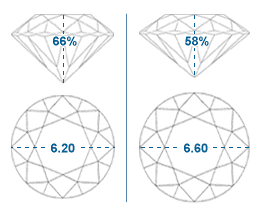
These diamonds weigh the same, but one diamond looks larger from the top because it is not cut as deep
Cut mainly refers to the final shape of the diamond after cutting and polishing; however, it can also be used to estimate the top view size and brilliance of the stone. Round brilliant cut dominates the market, accounting for over 75% of all diamond sales. All of the other fancy shapes combine to account for the other 25% of the market. In terms of price, round tend to cost more because of the high demand, and the fact that round brilliant cuts lose the most weight after cutting and polishing. Rounds also tend to have more stable prices, as fancy cuts will ebb and flow with the changing demands of fashion trends. Pictured below are most of the various cuts.
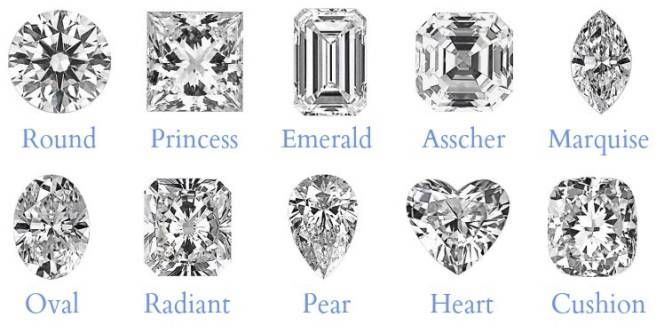
Color is probably the hardest of the 4 C’s for consumers to see. It has also become much subject of debate between grading labs over the years. Color refers to how “white” a diamond is. The color scale starts at D (colorless) and continues down the alphabet to Z (light yellow). D color diamonds are the highest in demand, and accordingly, the most expensive. Below is a chart to help you understand this a little clearer. Note that fancy yellow or “canary” diamonds fall under a separate grading scale and are not subject to this color scale
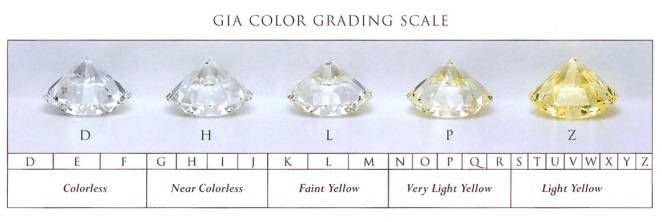
The final “C” is clarity. Think of clarity as how clean or clear a diamond is. Almost all diamonds have some type of inclusion or “birthmark.” There are many different types of inclusions, as well as many different kinds of material that can get trapped inside of a diamond during the growing process. The clarity grading scale goes from flawless (FL) to included (I3). Flawless stones are extremely rare, and carry heavy premiums; while, heavily included diamonds are known as promotional quality, and are generally used in tools, rather than jewelry. Generally, the amount, size, color, and location of inclusions are what graders look at to grade the clarity of a diamond. Pictured below are examples of diamonds in each of the clarity grades. For the most part, clarity differences of diamonds that are VS or better will need gemological instruments to see. Diamonds SI or worse will have inclusions that are much easier to see, sometimes without the help of any magnification.
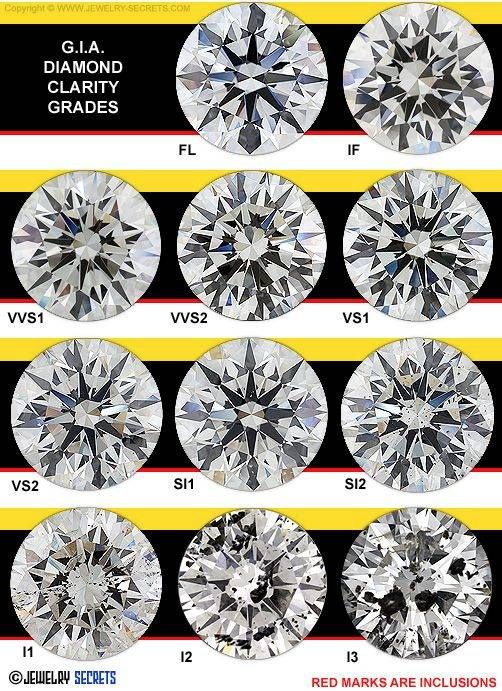
Additionally, diamonds can also have fluorescence; however, most consumers are not familiar with this trait. In a nut shell, fluorescence is the effect an ultraviolet or “black light” has on a diamond. Most fluorescence will cause a diamond to glow blue, because that is the complimentary color to yellow, which most diamonds have a tint of. In rare cases, diamonds can have yellow, white, or other color fluorescence. Fluorescence has been widely misunderstood over the years, and was thought to decrease the price of a diamond tremendously. Recent studies by the Gemological Institute of America however, have shown that only colorless diamonds (D-F) that have strong or very strong blue fluorescence have a visible impact on a diamonds appearance. Other studies have also shown that faint yellow diamonds (J-M) with fluorescence can actually have a positive impact on a diamonds visible color. Fluorescence of other colors, like yellow, tend to have a very negative impact on a diamonds color, and should be avoided unless purchased at a much lower price than a comparable diamonds without the fluorescence. Shown below are examples of different strengths of blue fluorescence.
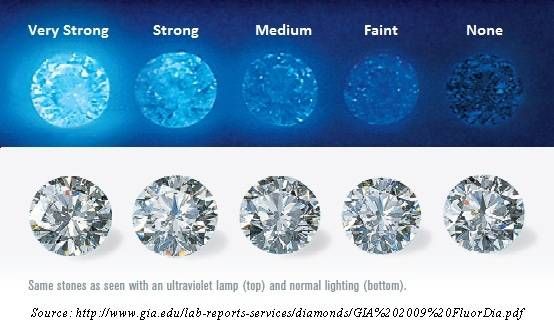
Now that you understand how the grading of diamonds works, your concern lies with who is doing the grading. Often times, jewelry stores will give a diamond their own grading. Established, reputable stores will usually grade their stones fairly; however, it is the nature of the business to grade liberally in a moment of uncertainty. The best way to ensure comparability and consistency is to compare diamonds that are accompanied by an independent lap report, this way; there is no conflict of interest. There are many diamond grading labs, but the Gemological Institute of America (GIA) has really set themselves apart as the leader in fair and consistent grading. Other labs, such as, the European Gemological Laboratory (EGL), will inflate a diamonds grade. These diamonds are traded at a much higher discount that GIA graded diamonds, because of their inflated grading. Pictured is an example of a GIA “G” color, and an EGL “G” color.
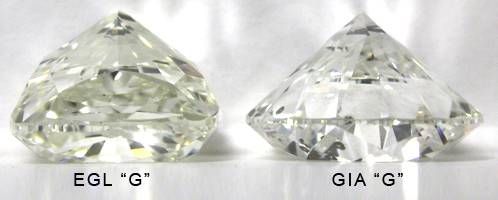
Both diamonds are graded as “G” color diamonds, but you can see the GIA diamond is much whiter than the EGL diamond
GIA has become the standard for diamond grading around the world. While this has aided in the comparison buying aspect of diamonds, it by no means can be used as a “be all end all” when comparing diamonds. GIA has become a huge company, with locations all over the globe. This makes it difficult to grade diamonds with perfect consistency. At the end of the day, it comes down to a subjective decision by a gemologist. For this reason, diamonds must always be viewed in person before purchasing. Similar lab grades, even by GIA, can vary tremendously in visual beauty. This is why purchasing online is extremely risky, and must be avoided if possible. Do you really want to save a little bit of money and risk purchasing an inferior diamond? ALWAYS COMPARE DIAMONDS, NOT CERTIFICATES. Shown below, I have added a picture of two diamonds with identical lab grades, both by GIA.
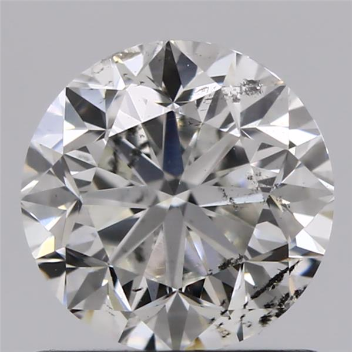
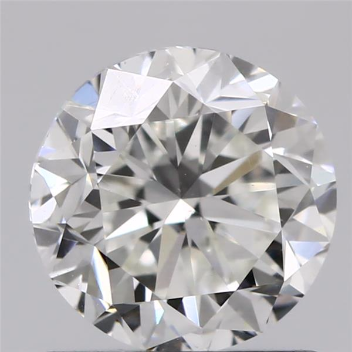
Both diamonds are graded SI2 in clarity by GIA, but one is obviously full of black inclusions, while the other is not.
The internet can be used as an effective tool in the process of looking for an engagement ring. For those looking to get engaged, looking at the thousands of styles of engagement rings online will give you a better idea of what you’re looking for when you decide to visit a brick and mortar jewelry store. The internet can also be used to get a little bit of education on diamonds and engagement rings before entering a store, so you know what you’re looking at, and what questions you’ll want answered.
Purchasing engagement rings online comes with too much risk for such an important purchase. You saw above the reasoning to avoid buying diamonds online. Engagement rings come with just as much risk. I’ve seen countless customers have to bring their ring in to get resized or have diamonds replaced that have fallen out during shipping or while wearing the ring. This is additional investment that has to be made into the ring that could have been avoided if it was purchased from a brick and mortar store. You’re paying for peace of mind. Part of the cost at a jewelry store is the warrantee. Those repairs would have been covered while you wait at no charge from our store. Do you really want to mail your ring back and forth for repairs, possibly waiting weeks to get it back? Lastly, engagement rings have to be tried on. Many rings just don’t look right on your hand, or are uncomfortable to wear. Now you’re at the mercy of the website to try to exchange the ring or get a refund. Like I stated above, purchasing online carries too much risk for such an important purchase.
That’s diamonds/engagement rings 101 in a nutshell. If you’ve made it this far, you now understand the risks of purchasing from a less reputable jewelry store or an online vendor; and, my hope is that you at least give us a chance to earn your business. Like I said in the beginning, we’re the oldest jewelry store in Minnesota, and my father and I are very knowledgeable when it comes to jewelry. We’re honest, trustworthy, and even pretty humorous if I do say so myself. Everyone that walks in is treated like family and we always make sure you walk out satisfied. We’re located at 945 Grand Ave. in Saint Paul and our phone number is 651-222-8585. Good luck and congrats.